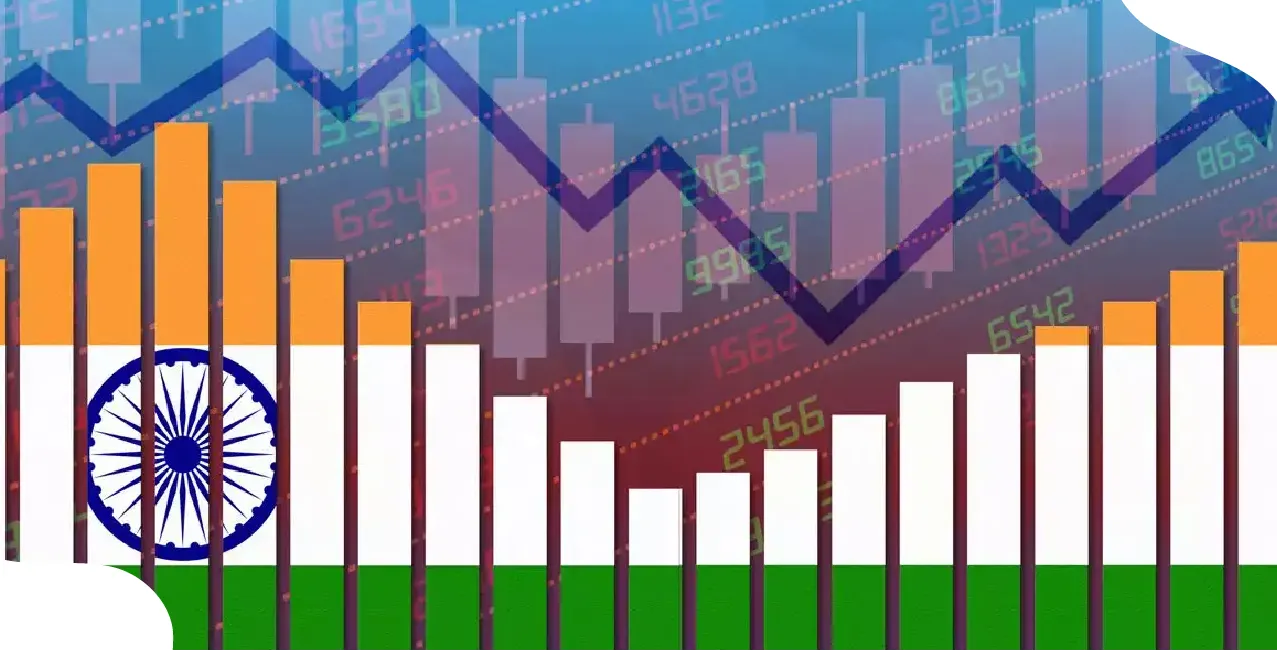
Author
LoansJagat Team
Read Time
4 Min
20 Aug 2025
India Needs 8% Growth Every Year Amid Global Risks, Says Finance Ministry
The Finance Ministry warns that India must maintain a high growth rate year after year if it wants to stand among developed nations by 2047.
What does it take for an economy to turn into a developed nation within a generation? This is the question facing India today. In August 2025, the ministry told Parliament that India must deliver an average of 8 percent annual GDP growth target every year to achieve the dream of “Viksit Bharat” by the year 2047. This goal is not new. What is different now is the challenge.
The ministry’s note to Parliament and the Economic Survey 2024–25 released in July 2025 both stress that this path is possible but not easy. On top of that, geopolitical uncertainties impact India's growth more now than before.
Finance Ministry Statement On India Economy Growth
The Finance Ministry’s latest report to Parliament in August 2025 lays down a target. To become a developed country by 2047, India must keep real GDP growth near 8 % each year. The report links this with another fact.
In 2023–24, India achieved 8.2 % growth. That number was based on strong quarterly performance. Three out of four quarters crossed 8 %.
But the challenge begins now. For 2024–25, the Finance Ministry projects a slower growth rate. Estimates range between 6.5 % and 7 %. This slowdown is linked to lower trade, rising protectionism, and global investment uncertainty.
The report also connects growth with capital. If India wants to maintain 8 % growth for the next twenty years, it must raise its investment-to-GDP ratio. The current investment rate is around 31%. The target is 35 %. Without this, growth will slow.
This table shows the gap. The country needs stronger public investment, private savings, and foreign capital. Without all three, the 2047 goal will remain distant.
Geopolitical Uncertainties Impact On India's Growth
The Finance Ministry’s August 2025 report does not stop at internal challenges. It goes on to list the impact of global tensions. One of the major concerns is a trade standoff with the United States. If the US imposes a 50 % tariff on Indian exports in 2025–26, India’s GDP could fall by up to 40 basis points.
Read More – What Is Economic Growth? Meaning, Factors & Real-World Examples
The damage does not end there. India’s textile, leather, and garment exports have already slowed. Trade talks with Western partners have lost speed. Weak demand in Europe and unpredictable oil prices add more pressure. These risks lower earnings from foreign trade.
India is trying to increase its global market share. But when world trade slows down, it becomes harder. That is why the report stresses stronger internal demand, better domestic supply chains, and newer export markets in Asia and Africa.
India Growth Challenges Amid Global Uncertainties
The Economic Survey 2024–25, which was tabled in Parliament in July 2025, supports the ministry’s concern. The report gives a sector-wise outlook and explains which parts of the economy are moving faster.
Agriculture is expected to grow at 3.8 %, helped by a record Kharif grain output of 1,647 lakh metric tonnes. Industry is projected to grow at 6.2 %. The first quarter showed strong factory output. Services, including IT and financial services, remain the fastest-growing area at 7.2 %.
Sector-Wise Outlook FY 2024–25
But the report also points out the gap between services and the rest. Services exports grew by 12.8 %. Merchandise exports only grew by 1.6 %. This imbalance creates pressure on the trade account.
Inflation averaged 4.9 % between April and December 2024. The Survey expects this to fall closer to the Reserve Bank of India’s target of 4 % by 2026. The current account deficit stands at 1.2 % of GDP. Bank non-performing assets have dropped to 2.6 %.
What More Is Required For India's 8 % Annual GDP Growth Target
The Finance Minister, in her July 2025 remarks to Parliament, said that capital expenditure will stay the lead engine for growth. This means continued spending on roads, railways, defence, and green energy.
Also Read - What is GDP – Full Form, Types & Economic Importance
The Economic Survey 2024–25 also said reforms must now go deeper. It underlined a new phase of the “Ease of Doing Business 2.0” framework. The aim is to help small and medium-sized businesses. The report compared these firms to Germany’s Mittelstand sector, known for its industrial strength and stable jobs.
Reforms in land use, labour laws, and credit access are needed. Only then can India raise its investment levels. These steps will also help local manufacturing and new enterprise zones.
At the same time, domestic policy must reduce shocks. Low inflation, healthy banks, and a balanced current account make the economy more stable. This helps even when the global market is rough.
Conclusion
The Finance Ministry’s statement in August 2025 has made one point clear. India needs 8 % growth every year to become a developed country by 2047. The goal is tough. But it is not out of reach.
The data from 2023–24 proves that the country can cross this mark. But the forecast for 2024–25 reminds us that maintaining this is not easy. Global risks will keep growing. Export demand will swing. Oil prices will not always favour India.
What will make the difference is how India responds. The country must spend more on public projects, support small businesses, raise domestic savings, and attract outside investment. Services will help. But manufacturing and agriculture cannot be left behind.
If India can do all this, year after year, it can get closer to the 2047 target. If not, the gap between where we are and where we want to go will stay wide.
Other News Pages | ||
About the Author

LoansJagat Team
‘Simplify Finance for Everyone.’ This is the common goal of our team, as we try to explain any topic with relatable examples. From personal to business finance, managing EMIs to becoming debt-free, we do extensive research on each and every parameter, so you don’t have to. Scroll up and have a look at what 15+ years of experience in the BFSI sector looks like.

Quick Apply Loan
Subscribe Now
Related Blog Post

LoansJagat Team • 10 Jun 2025

LoansJagat Team • 06 Jun 2025

LoansJagat Team • 22 Sep 2025